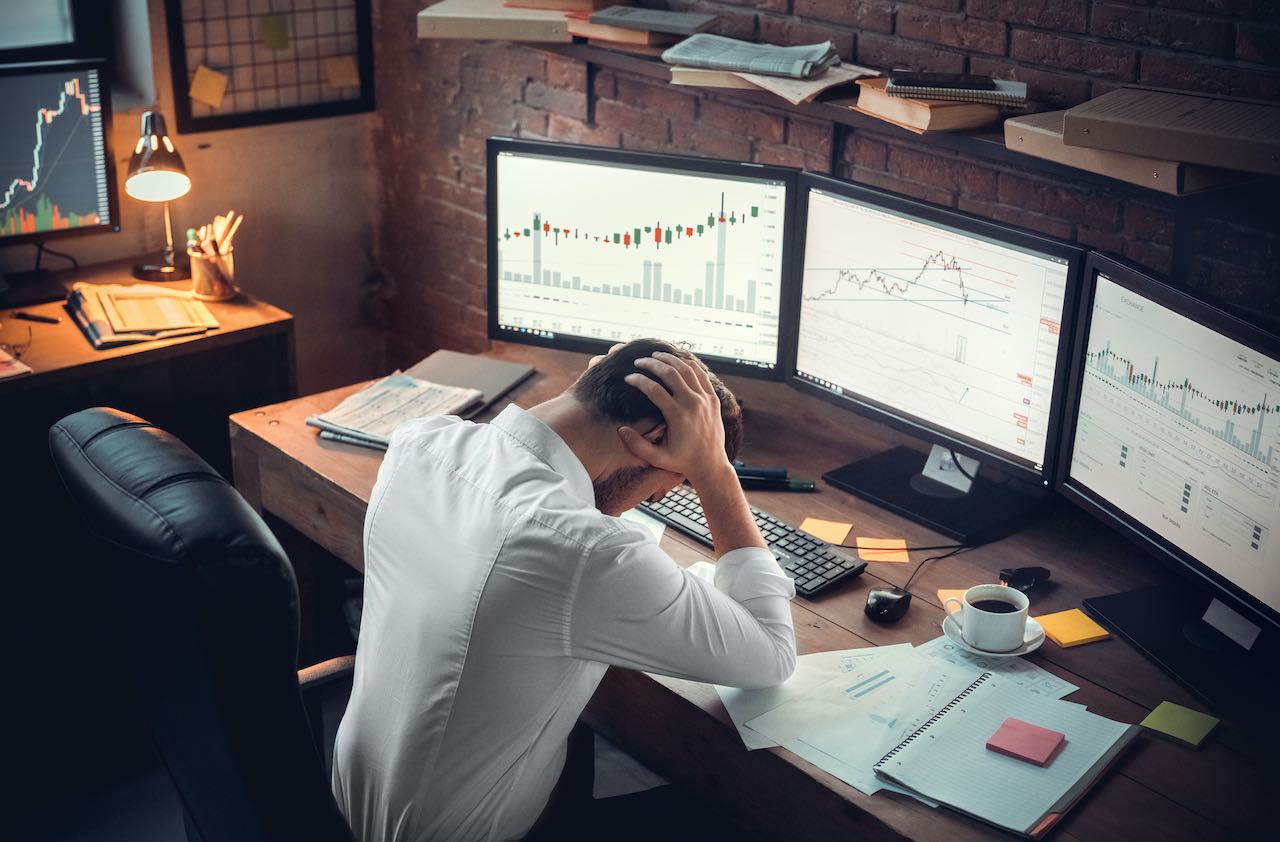Bigger Is Better
While profits of large companies have been surging, their stocks have produced disappointing results. That's finally changing. It's time to increase your holdings in the behemoths.

Now that the Dow Jones industrials have finally surpassed their old record high, set nearly seven years ago, it's time to think big -- stocks of big companies, that is.
Between 2000 and 2004, shares of small companies clobbered those of little ones. Then last year, depending on which indexes you examined, the two groups ran roughly neck and neck. This year, large-capitalization stocks have pulled ahead. Don't look for them to relinquish that lead anytime soon.
The perennial argument between bulls and bears is beside the point today. There are a half-dozen good reasons for stocks to continue to rise from here and almost as many things that could make stocks fall. I'm still in the bullish camp, but remember: No one can predict the short-term fluctuations of the market with enough consistency to add value long term over buying and holding stocks or stock funds.

Sign up for Kiplinger’s Free E-Newsletters
Profit and prosper with the best of expert advice on investing, taxes, retirement, personal finance and more - straight to your e-mail.
Profit and prosper with the best of expert advice - straight to your e-mail.
I think large caps should excel whether the market goes up, down or sideways. Over the past three months, the large-cap-dominated Standard Poor's 500-stock index returned 6%, while the Russell 2000 small-cap index was flat. But shares of bigger companies almost always hold up better in falling markets than do small stocks. After all, bigger companies tend to be more diversified and better capitalized, and they tend to sell their products and services into more parts of the world.
"The decline in U.S. large-capitalization equity valuations over the past several years is unprecedented," Tom Marsico, manager of Marsico Growth (symbol MGRIX) and Marsico Focus (MFOCX) -- and a canny market strategist -- said in a note to clients recently. His firm's research showed that the SP's price-earnings ratio had declined by roughly 50% since the end of 1998. The companies in the SP are trading at about 14 times Marsico's estimates of 2007 earnings (and about 15 times the average estimate of strategists polled by Thomson First Call).
During that same period, SP earnings soared 90%, Marsico said. "That paradoxical relationship -- falling stock prices coinciding with rising earnings -- will not continue indefinitely. A re-rating of stock prices will eventually take place, though we can't predict precisely when." While stock prices don't always follow earnings right away, the change in market fortunes has now begun.
Here's the kicker: When either small caps or large caps get on a roll, they tend to continue doing well -- usually for at least another year or two. That's the conclusion of Roger Ibbotson, founder of Ibbotson Associates, the market research firm that was recently acquired by Morningstar. Indeed, Ibbotson kept telling me to stick with small caps during the early and middle years of the small-cap rally. I'm glad I listened.
Last quarter's triumph for large caps puts them ahead of small caps for the year's first three quarters. The SP 500 is now up 9% this year compared with an 8% return for the Russell 2000. The margin is slender, but I think it will grow during the fourth quarter.
Chris Davis, co-manager of Selected American Shares (SLASX), has been beating the drum for large, high-quality companies for some time. He was premature, and so was I. But now I think we'll both be proven right. "Some of the highest quality companies that we know -- companies with strong balance sheets, global leadership, durable brands and relatively reliable growth prospects -- are trading at virtually no premium to second-tier alternatives," Davis said in a recent shareholder report.
I write often about corners of your portfolios, but the center of almost any good portfolio should be stocks of large companies. Whether you choose to buy individual stocks or funds, about half your stock money should be in large and midsize companies at all times. Today, you should up that percentage to roughly 60%. I'd put 15% in small stocks and 25% in foreign stocks. What's more, the bulk of your foreign stocks should be large caps, too.
So far this year, large-cap value stocks have surged, while large-cap growth stocks have been left behind. That won't continue if the economy slows. In deciding how to divide large-cap money between growth and value, I'd put an extra five percentage points or so into growth.
My favorite large-cap-growth funds are the two Marsico funds, T. Rowe Price Growth (PRGFX) and Vanguard Primecap Core (VPCCX). On the value side, you can't do better than Clipper (CFIMX), which is run by Davis and Ken Feinberg, the gifted managers of Selected American Shares, another sterling choice.
Steven Goldberg is a freelance writer and former senior associate editor of Kiplinger's Personal Finance magazine.
Get Kiplinger Today newsletter — free
Profit and prosper with the best of Kiplinger's advice on investing, taxes, retirement, personal finance and much more. Delivered daily. Enter your email in the box and click Sign Me Up.

-
 Stock Market Today: Stocks Gain on Tech, Auto Tariff Talk
Stock Market Today: Stocks Gain on Tech, Auto Tariff TalkThe Trump administration said late Friday that it will temporarily halt tariffs on some Chinese tech imports.
By Karee Venema
-
 Sam's Club Plans Aggressive Expansion: Discover Its New Locations
Sam's Club Plans Aggressive Expansion: Discover Its New LocationsSam's Club expansion plans will open up to 15 new stores each year. Learn where they plan to open in 2025.
By Sean Jackson
-
 ESG Gives Russia the Cold Shoulder, Too
ESG Gives Russia the Cold Shoulder, TooESG MSCI jumped on the Russia dogpile this week, reducing the country's ESG government rating to the lowest possible level.
By Ellen Kennedy
-
 Morningstar Fund Ratings Adopt a Stricter Curve
Morningstar Fund Ratings Adopt a Stricter Curveinvesting Morningstar is in the middle of revamping its fund analysts' methodology. Can they beat the indices?
By Steven Goldberg
-
 Market Timing: The Importance of Doing Nothing
Market Timing: The Importance of Doing NothingInvestor Psychology Investors, as a whole, actually earn less than the funds that they invest in. Here’s how to avoid that fate.
By Steven Goldberg
-
 Commission-Free Trades: A Bad Deal for Investors
Commission-Free Trades: A Bad Deal for Investorsinvesting Four of the biggest online brokers just cut their commissions to $0 per transaction. Be careful, or you could be a big loser.
By Steven Goldberg
-
 Vanguard Dividend Growth Reopens. Enter at Will.
Vanguard Dividend Growth Reopens. Enter at Will.investing Why you should consider investing in this terrific fund now.
By Steven Goldberg
-
 Health Care Stocks: Buy Them While They're Down
Health Care Stocks: Buy Them While They're Downinvesting Why this sector should outperform for years to come
By Steven Goldberg
-
 Buy Marijuana Stocks Now? You'd Have to Be Stoned.
Buy Marijuana Stocks Now? You'd Have to Be Stoned.stocks Don't let your investment dollars go to pot
By Steven Goldberg
-
 4 Valuable Lessons From the 10-Year Bull Market
4 Valuable Lessons From the 10-Year Bull MarketInvestor Psychology Anything can happen next, so you must be mentally prepared.
By Steven Goldberg